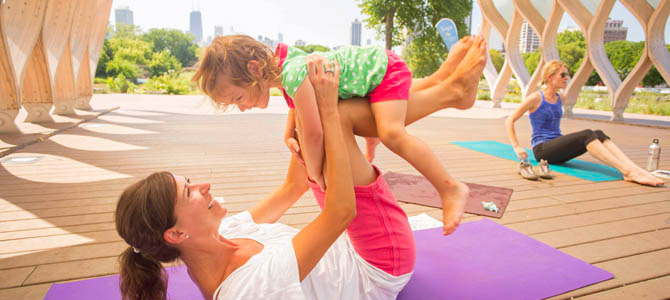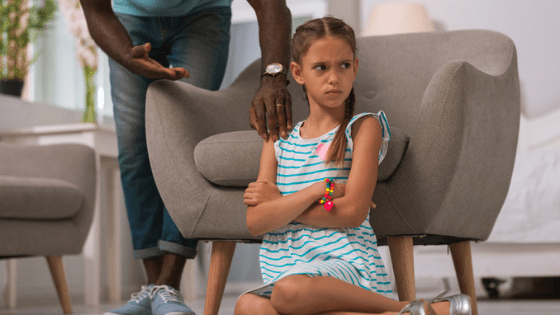I’ve spent most of my adulthood as both a parent and an elementary school teacher. While both jobs have been tremendously rewarding, they’re also a challenge, because no two days are the same when you work with children. But I can also count on one constant no matter the day of the week — repercussions.

Children are always testing the boundaries of what they can do and get away with. Occasionally, there are times that require some sort of punishment for bad behaviour. Thankfully, the ways parents correct unwanted behaviours have evolved over time. Where you’d once hear about spanking or more physical forms of discipline, many classrooms and homes have turned to time-outs and other forms of psychological penalties.
But is that evolution really that much of an upgrade?
Time outs are meant to have a child contemplate his or her behaviour for a while in solitude. Parents and educators expect the child to return after the time-out with a renewed sense of what’s right and wrong and a plan on how to stay on the right side of the rules.
But that rarely happens. In more than a decade as a teacher, I’ve seen it work on fewer than five occasions. Eventually, the child reverts back to the previous behaviours once the threat of further punishment has passed.
Children typically use the time-out to dwell on the anger caused by the punishment. They often leave even angrier than when they entered. While the child may act differently after they emerge from their sentence, it’s only because he or she wants to avoid extending the quiet time any further — and not because they’ve decided to change their ways
Besides mom and dad getting a chance to catch their breath and calm down after a frustrating moment, what are the true intended results from this type of punishment? Can we really expect a child to pivot in their behaviours simply because they’ve spent some time alone?
Perhaps the answer to that question can be found in the most unlikely of places — an inner-city Baltimore school.
Several years ago, Robert W. Coleman Elementary School turned its detention hall into a Mindful Moment Room, where students retreat to practice pre-taught meditation and breathing techniques instead of sitting in silent detention. The effects, even years later, are astounding.
That’s because, as studies have found, simple, short-term mediation periods almost always improve attention and self-regulation in children. Parents of children diagnosed with attention deficit-hyperactivity disorder (ADHD) have praised the effects that yoga and meditation have on their child’s home life —such as better sleep patterns and less anxiety — and at school — such as improved concentration and less conflict.
Even if your child doesn’t suffer from any of these ailments, meditation and yoga are a tremendous way to relax the mind and teach control to overly competitive children, as well as prepare your kids for a tough challenge or test.
These results happened, in part, because meditation and yoga have scientifically proven social, emotional and behavioural benefits that include increased attention and focus, improved physical and mental health and a greater ability to self-regulate actions and emotions.
And even better, meditation can be incredibly easy to teach to children and have no cost at all to parents.
Guided Meditation for Children in Groups
I used mediation and yoga for years in my classroom before tests or on days that might otherwise cause a heightened state of activity (like when the class had a guest speaker or field trip).
Over the years, I taught numerous students who were diagnosed with ADHD, Tourette Syndrome, Obsessive-Compulsive Disorder (OCD) or other ailments. Nearly 100% of these students experienced benefits from regular meditation practice — including improved self control, better focus and a greater state of self awareness.
Most couldn’t explain why the change occurred, but admitted that they felt better, more in control and found it easier to concentrate. Over the years, as the students graduated out of my class, I passed the techniques on to their parents, who continued the practice at home. Most still remain in contact with me today and proudly report that they now meditate as a family — and are all experiencing similar benefits.
The methods I used in the classroom don’t necessarily teach children how to meditate, but rather allowed them to find a spot in the classroom that they considered comfortable. Some would chose areas under desks and tables. Others grabbed a comfy spot in the corner. Many positioned themselves in the centre of the room. The only rule was that students had to be at least two arm lengths away from their peers — to avoid talking or other distractions during practice.
Some days, I’d play relaxing ocean or rain sounds lightly in the background — most of which can be found for free on mobile apps or social sharing sites like YouTube. Other days, I’d allow the room to be silent. I found that my students almost always performed and behaved better on days when we meditated.
How Parents Can Meditate with Their Child at Home
Children are natural meditators since they lack the mental barriers, biases and pre-determined beliefs that inhibit most adults from achieving a pure state of mindfulness.
Their ability to take to the practice quickly also gives them control over their practice and is a great way to build confidence in developing minds.
For children just beginning, meditation sessions can be fairly short. Depending on the age of the child, most beginners start with a goal of meditating for between three and five minutes. Those sessions can extend over time to up to 20 minutes as positive effects increase.
A quiet space with no distractions is the only “must” for a successful meditation practice. You can also use a timer to keep track of your session, though you should be certain that the timer doesn’t having a jarring sound when it goes off. That’s not the best way to emerge from a peaceful, relaxing period.
And, please, don’t invest in fancy mats and pillows until you know that your child will benefit from the practice. You’ll get the same benefits by sitting on your living room rug as you would on a $40 mat from an upscale boutique.
Initially, children will struggle to sit upright with eyes closed for their entire practice — and that’s totally Okay. But keeping the eyes closed will allow for deeper relaxation and fewer distractions. Sitting upright is also optimal, since laying down can be too relaxing and lead to an unintentional nap.
Remember that peeking is fine! No beginner can be expected to remain close-eyed the entire time. Most children will be fidgety after a few minutes. Just encourage him or her to try their best to sit still with their eyes closed until the timer goes off.
In time, the entire practice will be easier and more beneficial once your child knows what to expect.
Start by directing your child to focus on his or her breath. Notice as the chest rises and falls. Then, start to encourage long, deep, slow breaths where the belly rises up on the inhale and contracts on the exhale. They can pretend they’re quietly blowing up a balloon or blowing out a candle.
The point isn’t to suddenly become enlightened. Instead, let your child focus on the silence in the room and relax his or her muscles. Practice daily if possible, though many have experienced benefits from practicing only twice each week.

Benefits of Yoga for Kids
About five years ago, my wife and I took up local yoga classes and have been pleasantly surprised to see many families bring their children along to participate.
Children are naturally flexible and enjoy the challenge of some of the more difficult poses. The trick is to teach your child to move slowly and intentionally. Yoga isn’t about showing who can out-stretch who. Instead, you and your child should learn to hold poses, focus on breathing and allow your heartbeat to regulate itself.
But, like meditation, yoga sessions don’t require paying for classes. You can get started for free through the many great guided yoga lessons online, including some on Amazon Prime and YouTube that take only 10 to 15 minutes to complete.
In fact, I’d recommend trying a few of the free practice sessions online before investing in a class. You never know the skill level of the other attendees of the class and will want to make sure you understand basic Yoga poses before pushing yourself to more difficult stretches.
The beauty of both meditation and yoga is that the practices can be done at home, at no cost and, best yet, together. By taking on these new ideas as a group, you and your family can bond over a shared challenge while experiencing a variety of benefits.
Even more, the next time your child challenges you with difficult behaviour, you can practice your own mini-meditation to cool down from the frustration.

 About The Author
About The Author
Ray FitzGerald holds Bachelor’s degrees in both journalism and education from the University of Florida and St. Leo University. He is a long-time teacher of the gifted in an elementary setting and works with parents, educators and children at RaiseALegend.com to help them raise a generation of legendary children. In his spare time, he travels the country to attend basketball games and classic film festivals with his wife, April. Ray lives in Gainesville, Fl.
 Kaboutjie SA Mommy Blogs by Lynne Huysamen
Kaboutjie SA Mommy Blogs by Lynne Huysamen





Hi Ray,
Great article, but I slightly disagree that meditation to be used as a replacement for punishing a child. While I completely disagree with punishment altogether and have a preference for teaching children what they did wrong and aid them to understand that.
You do touch on something very powerful and from what I have seen during my 5 years+ in Thailand is that meditation is something that is incredibly powerful when it comes to aiding good behaviour in children. It is something that is taught in school to children as young as……Pre school!
The effect is a calmer. more mindful, more respectful society and athough something deep within the culture children that are more respectful of their elders and much better behaved.
In my experience both as a teacher at a high school and a citizen I never really seen anything at all in regards to rebelous teens or teenage angst.
Again great article.
I do agree with you that there is a time and a place for discipline @derek – I have started using some of these ideas with my 2 kids and the result has been great so far. It made me think a bit more about the time out that I give my kids and realize that they need to also be accountable for their actions.
They now need to spend their time out time thinking about why they are having time out and when their time is up come and talk to me about why they had it and what they will do differently in future.
The first few times when I spoke to them they had this blank look on their faces, now they actually think about it and talk to me about it. A huge improvement!